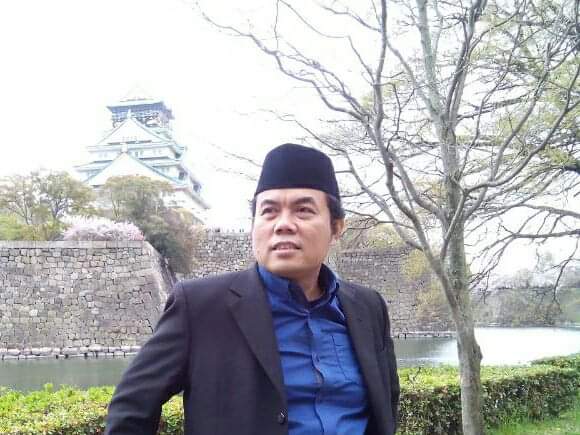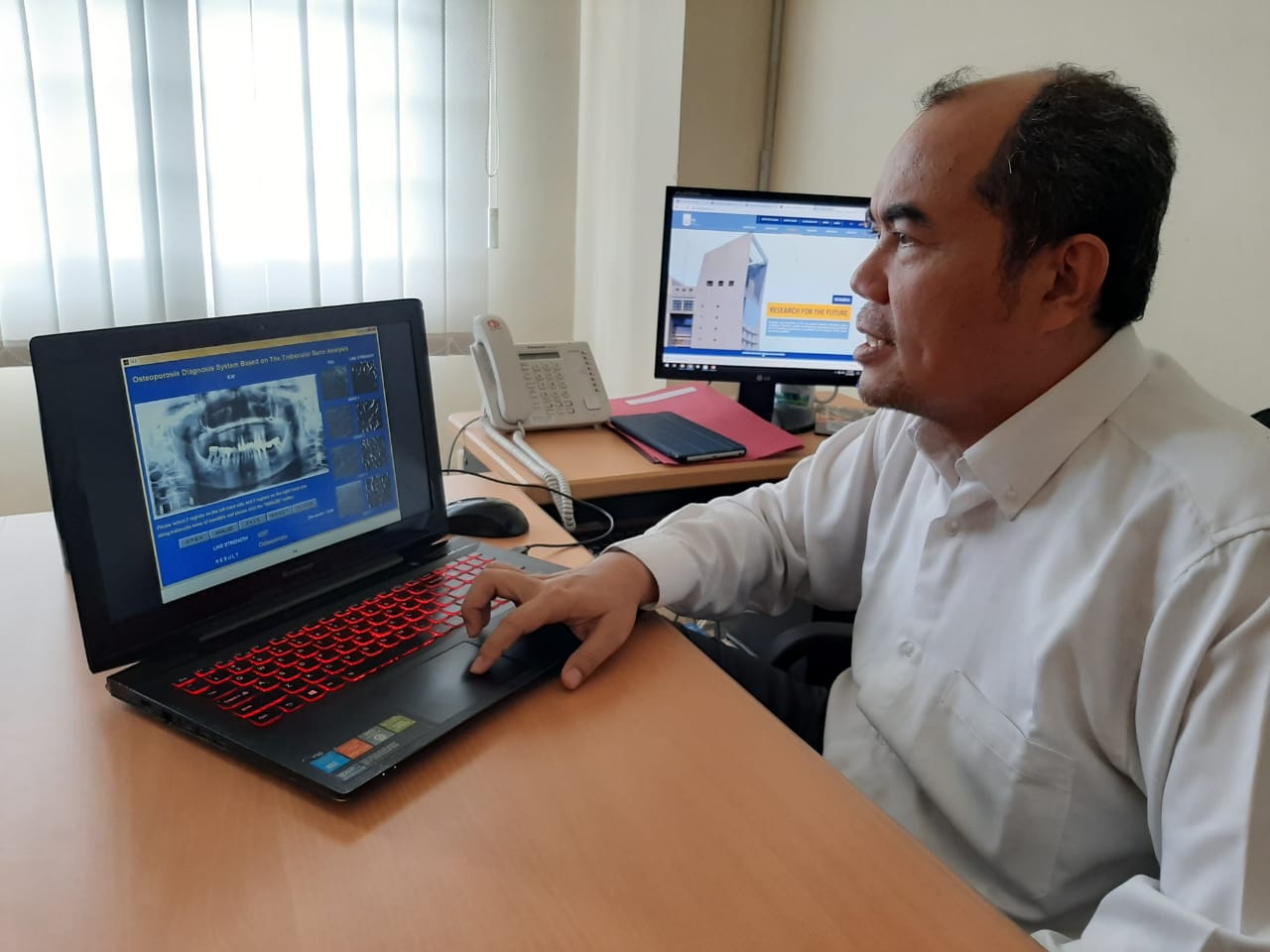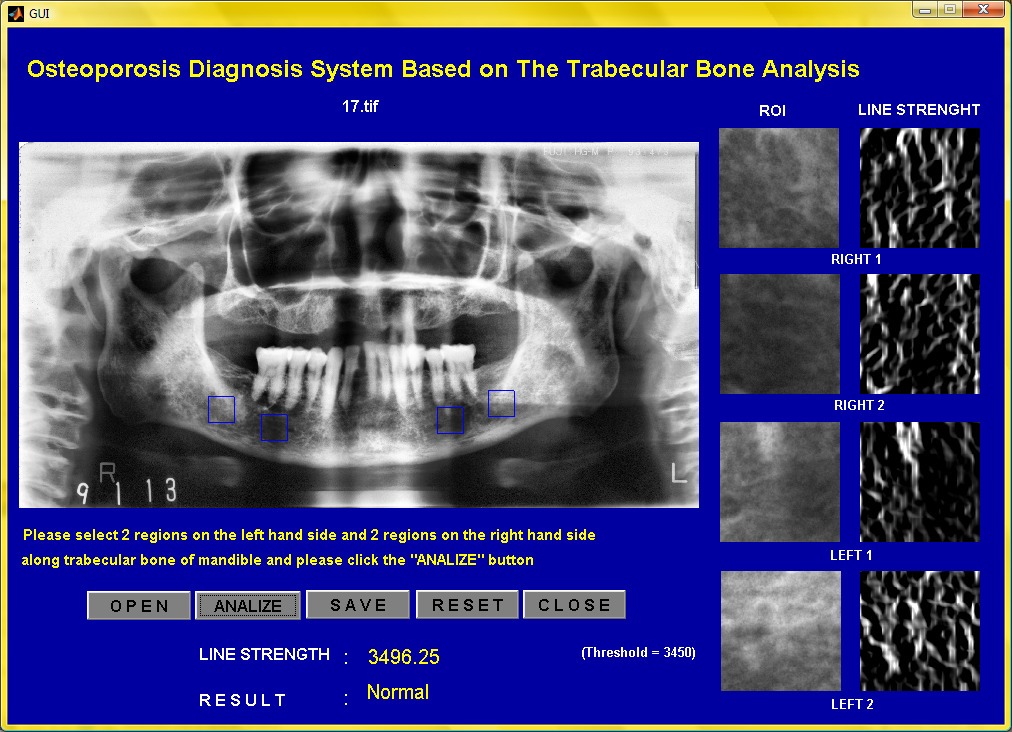ITS Professor Develops Medical Technology Based on Artificial Intelligence

Prof Dr Agus Zainal Arifin Skom Mkom while still on doctoral degree study in Hiroshima University, Japan
ITS Campus, ITS News – Innovations in medical technology come into the attention of the academic civil society of the Sepuluh November Institute of Technology (ITS) to be developed. One of them by the medical image processing technology through artificial intelligence created by Prof. Dr. Agus Zainal Arifin SKom MKom. His invention also made him a Professor who would be officially confirmed, Wednesday (12/2), tomorrow.
Artificial intelligence application-based medical images made by Agus can be used to conduct osteoporosis detection using jaw image, identification of chronic periodontal disease, and age estimation through a panoramic image of the tooth. In addition, the mass classification on the mammogram image to detect breast cancer and the detection of malaria parasites through the image of thick blood operation.
One of its findings, which is osteoporosis detection, has patent rights since 2011. Through this application, dentists can get preliminary information related to osteoporosis using the image of the jaw sufferer. The information can then be used to refer sufferers to the relevant specialist physician. “So it can reduce the risk of fractures due to delayed handling,” said the former dean of the Faculty of Intelligent Electrical and Information Technology.
As for the prototype of osteoporosis detection using the image of this jaw, according to Agus, it has been tested well and has begun to be used by two dentists in Surabaya and Bandung. “Their response is also very good because of the ease in conducting early disease detection,” said the lecturer from the Department of Informatics.

Prof Dr Agus Zainal Arifin SKom Mkom shows osteoporosis detection applications through the image of the jaw that he designed
Aside from using jaw imagery, Agus also created an application for osteoporosis detection with Cone-Beam Computed Tomography (CBCT). The advantage of this CBCT, he said, is to have a high resolution with a relatively low dose of radiation. The app is also already finished and well tested. “But this app has not been used much because the price is relatively expensive although it is cheaper than CT-Scan,” said the lecturer who completed his doctoral study at Hiroshima University, Japan.
The development of medical technology conducted by Agus also produced an age estimation device based on an image of a panoramic radiography tooth for adult age individuals. The results of this research are crucial to help the forensic odontology experts identify the age of casualty or disaster through dental features. “The use of this tooth because even if the body has been destroyed, rot, burned, or mutilated can still be identified,” said lecturer born August 9, 1972.
The development of the system to detect malaria parasites on the image of the thickness of low-quality blood, expected to be used for the diagnosis process of malaria in Indonesia, especially in eastern Indonesia that has high malaria potential. This study, said Agus, was part of a collaboration with the Agency for Technology Assessment (BPPT) and the Eijkman Institute of Molecular Biology.

The appearance of Osteoporosis detection application using jaw image by Prof Dr Agus Zainal Arifin SKom MKom
The use of artificial intelligence in this developed medical world is expected to minimize the level of error in medical decision making. So, in the future it can play a role to improve the quality of human life. The replication of software used also does not require a high cost. “It is expected to be able to reduce the health service costs in the future,” he said.
Agus also hopes that his findings can inspire the development of scientific integration in the field of digital image processing, computer vision, and artificial intelligence in order to realize the independence and sovereignty of medical equipment technology. “In the end it will create an improvement in the quality of human life because of the affordability of health costs and the more sophisticated health tools,” he hopes. (Sep/Anjani/ITS Public Relation Officer)
Related News
-
Gains Up 300 Percent, ITS Targets Increase in Scholarship Recipients
ITS Campus, ITS News – In the period 2020 – 2023, the scholarship disbursement budget collected by Institut Teknologi
February 11, 2020 21:02 -
Gains Up 300 Percent, ITS Targets Increase in Scholarship Recipients
ITS Campus, ITS News – In the period 2020 – 2023, the scholarship disbursement budget collected by Institut Teknologi
February 11, 2020 21:02 -
ITS students attend an international oil and gas conference in Saudi Arabia
ITS Campus, ITS News – Students from the Department of Ship Systems Engineering at Institut Teknologi Sepuluh Nopember (ITS)
February 11, 2020 21:02 -
ITS students attend an international oil and gas conference in Saudi Arabia
ITS Campus, ITS News – Students from the Department of Marine Engineering at Institut Teknologi Sepuluh Nopember (ITS) became
February 11, 2020 21:02
